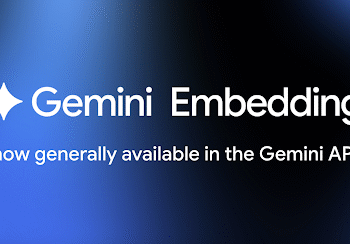
A chat with the independent journalist whose work appears in Al Jazeera, Fast Company, Bloomberg and more.
Amanda Coffee is CEO of Coffee Communications and ex-Under Armour, PayPal and eBay.
Andy Hirschfeld’s work covers everything from economic trends to political tensions to the best coffee shops to work from in New York. Hirschfeld is widely recognized in New York media circles for building community among journalists and media professionals, including hosting regular in-person NYC networking events.
Hirschfeld prioritizes building strong relationships with sources and often returns to people he trusts when working on new stories. I introduced him to my contact Ivy Yang, an expert on China relations, and months later he reached out to include her in a piece for Fast Company.
He values PR pros and won’t publicly call out off-base pitches — but if you ever meet him in person, ask him about the wildest ones. He has great stories, like the time someone pitched a golf equipment CEO for a business piece that had nothing to do with golf.
We caught up with Hirschfeld to discuss how PR professionals can effectively pitch him, what makes a story global, and how he’s building community through his Work from Home-ish Substack.
What advice do you have for PR pros pitching their client for inclusion in a bigger feature story you’re working on? For example, what spokespeople made the cut for your Fast Company feature on the creator economy?
Don’t pitch your client as the story. Instead, position them as someone who can speak to the bigger issue. Frame them as an expert on the topic, not the focus of the piece.
If it reads like you’re trying to sell me something, that’s PR. That’s not journalism. I’m looking for people who have real insight — people who bring substance to the conversation.
This approach benefits your client as well. When someone comes across as a credible expert, readers take them seriously. They come away thinking, ‘OK, this person knows what they’re talking about.’ That’s a lot more powerful than feeling like they’ve just read an ad.
For my Fast Company story on the creator economy, it came down to who reached me first. I received roughly 150 inbound pitches for sources. Most people were qualified, but I only had bandwidth to consider the first 20 or so that stood out. Timing really mattered in that case.
At Al Jazeera, you have a large global audience. What would surprise PR pros about the bar for what’s newsworthy for a global versus national or local media outlet?
It depends on the story. A local issue can work globally if it connects to international trends.
Take congestion pricing, for example. I covered it in New York, but it’s not just a New York thing—cities like Singapore, Paris, and London have all dealt with similar debates. So while it’s technically local, the political tension between liberal-leaning city governments and more conservative national leadership is something readers everywhere can relate to.
Even something like the Newark Airport chaos I wrote about recently — sure, it’s local, but it has ripple effects. People can see how it fits into broader infrastructure or transportation conversations around the world.
As an independent journalist, you have a mix of beats. Do you mind breaking down all the outlets you contribute to, including your Substack and your ski magazine?
Right now, I’m doing daily economic coverage for Al Jazeera — everything from breaking news to deeper explainers.
I’ve also written features for Fast Company, Bloomberg, CNBC, Marketplace, Time Out — a bunch of places over the years.
On the side, I run a Substack called Work From Home-ish, where I review NYC coffee shops to see how good they are for remote work.
And once a year, I put together a ski magazine with OvRride, this travel company based in New York. It’s like a cross between a gear guide and a travel mag—altitude tips, trip ideas, that kind of thing.
You recently spoke to students at New School and Sarah Lawrence on the future of journalism and building a career as a journalist. What was your top piece of advice? What was their best question for you?
When I talk to students, I try to be real with them. Journalism is hard — especially at the beginning. You spend your days transcribing interviews that never get published, pulling tornado photos off social media, doing grunt work no one dreams of doing.
But the question I always ask them is, ‘Are you excited just to be in the room?’ That’s how I knew journalism was for me. Even when the work was tedious, I still wanted to be there.
I used to think I wanted to be a chef because I loved to cook. So I got a job in a restaurant — and ended up peeling potatoes for hours. That’s when it hit me: everyone wants to be the one creating the menu, but you have to be excited just to be there. And in that kitchen, I wasn’t.
But in a newsroom? Even doing the dull tasks, I felt energized. That’s when I knew I was in the right place.
A lot of students also ask how to make freelancing sustainable. And the truth is, unless you have something specific to say, it’s not easy. You need a strong point of view or lived experience—something that sets you apart. Editors notice when you bring real perspective.
Every journalist I know can’t imagine doing anything else. It’s a tough job, but if it’s for you, it’s worth it.
Freelancing comes with its own Catch-22. It’s easy to start publishing on Substack or Medium, but if you don’t give people a reason to care, they won’t read it. I had a leg up—years at major networks, some awards, a résumé that made editors feel like they could take a chance on me. That kind of credibility helped open doors.
But that model’s changing. If you’re coming out of school and want to freelance, the best shot you’ve got is writing something only you can write—because of what you’ve experienced or how you see the world. That’s what cuts through now.
You’re known for creating a community of journalists and entrepreneurs through the WFHish SubStack. How is it helpful for you to connect with other journalists and creators?
Work From Home-ish isn’t really about the coffee shops. That’s just the entry point. It’s about building community — especially for people who work remotely and don’t have a built-in newsroom or office crew.
Freelancing can get lonely. I’ve had a small group of friends — other journalists — where we’d meet up at a café, work side by side, then grab dinner after. That kind of rhythm made the work feel a little less isolating. I wanted to recreate that for other people.
It’s not about finding collaborators or networking. It’s more like… having coworkers you actually want to hang out with. No office politics. Just people who get what you’re doing and what you’re going through. That’s the energy I’m trying to build.
What’s a recent pitch from a PR pro or brand that was an immediate ‘yes’ and why?
That’s not an easy question — like, what pitch was an immediate yes —because honestly, it rarely works that way anymore. I get 150 to 250 pitches a day, even on slow days. And more and more, I can tell when they’re written by ChatGPT or blasted to every other journalist on Earth.
When it feels like the goal is just to get 200 people to write the same story? I’m out. There’s no point.
So for a pitch to actually land with me now, it takes more. It has to feel like there’s something real behind it.
One that stands out was from Indy Pass. They invited me to a press event in New York, and honestly, at first I thought, ‘Why is a ski pass company hosting something here?’ It felt random. But I went.
At first, I didn’t see the story. But they stuck in my mind. And over the next few months, I kept watching what was happening in the ski industry — how Vail Resorts and Alterra Mountain Company have basically created a duopoly. They control most of the major ski destinations now, and they’ve made the sport increasingly expensive and exclusive. Unless you’re dropping $30K on a ski week, it’s tough to participate.
Indy Pass was trying to push back on that. They were aligning more with the original spirit of skiing — scrappy, affordable, more about the love of the sport than luxury. That made them part of a much bigger story, and that’s why they ended up in it.
Another pitch that really worked came from a company called Social Catfish. They told me about a Nigerian romance scammer who flipped and became a whistleblower — he started working with them to help victims.
It was such a specific story, but also incredibly relevant. Scam culture is everywhere now — those fake EasyPass texts, phishing emails, all of it. Even if someone hasn’t been hit by a romance scam, they get the feeling of being targeted or manipulated. That pitch landed because it hit a nerve and wasn’t trying too hard to force a product into the conversation.
So yeah, most pitches don’t work. But the ones that do usually tie into something bigger, feel genuine, and don’t treat journalists like mass email targets.
What’s a pitch from a PR pro that was so off it left you scratching your head?
Has anyone ever pitched me something I’d never cover? Oh yeah, definitely. I can’t think of a specific headline off the top of my head, but one that really stuck with me — because it bothered me — was when I put out a call for experts on the travel industry. I was doing a story about how Trump-era policies were impacting travel, and this PR firm replied and said, ‘Well, we’ve got this CEO of a cloud computing company — he travels a lot, so he has insight.’
And I was like… what? That’s not what I meant. I meant someone who works in the travel industry — not someone who just flies on planes a lot. It’s that kind of wild stretch just to get a client placed that makes no sense to me. Readers are going to see that and wonder why I’m interviewing an IT guy about tourism policy.
So yeah, if your client doesn’t actually fit the story, don’t force it. All it does is clog up my inbox.
And you can tell when people haven’t even read the request — or when they clearly didn’t use my name, or worse, pitch me a version of a story I just published the week before. I’ve seen that a lot lately.
I also get these pitches that have just… strange phrasing. You can tell they were written by AI. And look, I get that people want to move fast and send things at scale, but if I see that kind of shortcut, I know I’m going to have to do more work to clean it up—and I don’t have time for that. I can’t trust someone’s judgment if they’re already showing me they’re cutting corners.
And the thing is, I can’t cut corners. If I get something wrong, it’s my name on the line. So I need to trust that you’ve got a clear sense of what’s relevant, and that you’re pitching with purpose—not just throwing spaghetti at the wall.”
What recent story of yours created the most conversation on social media (LinkedIn, X, Bluesky)?
Yeah, it really depends on the platform. My Fast Company piece on the creator economy did great on LinkedIn — business audiences really show up there.
But on Twitter and Bluesky? It was the Trump rally story — the one about him not paying vendors — that took off. Political stuff tends to get way more traction on those platforms. So I definitely think about where a story’s going to land, because the reaction can be totally different depending on who’s reading it and where.
What would you like to cover more of in the second half of 2025?
Realistically, I’ll keep covering the day-to-day stuff — economic shifts, AI, tariffs, all of that. But what I really want to do more of are profiles of people doing the unexpected.
I’m talking about folks building the next Apple or Uber. The surprising underdog in a political race who suddenly gains momentum. Not just another startup founder tweaking something that already exists—but someone actually shaking things up. Or someone taking over a failing company and trying to turn it around.
That’s the kind of story that gets me interested.
The post Q&A with Andy Hirschfeld: On pitching, freelancing, and finding the real story appeared first on PR Daily.












